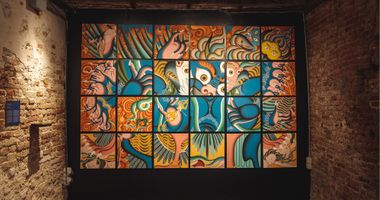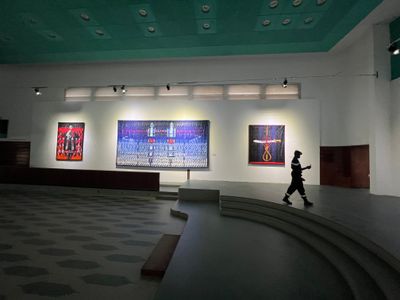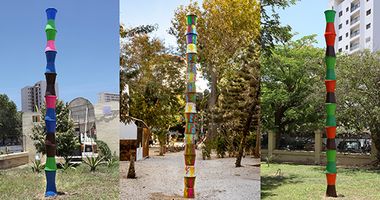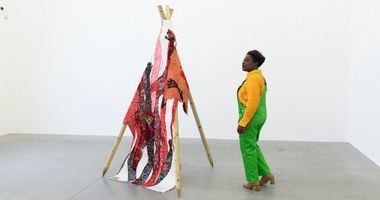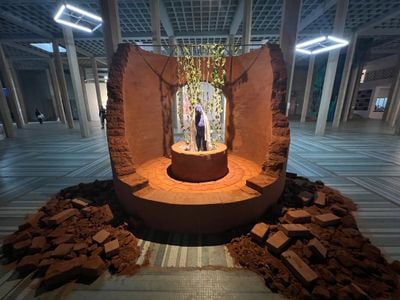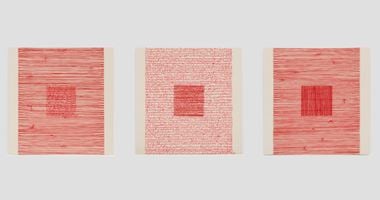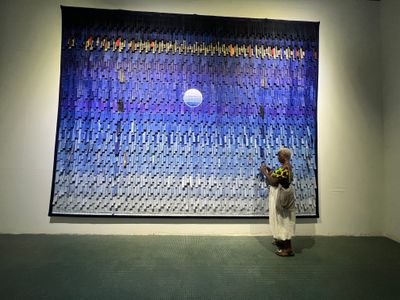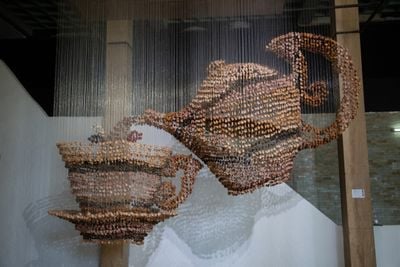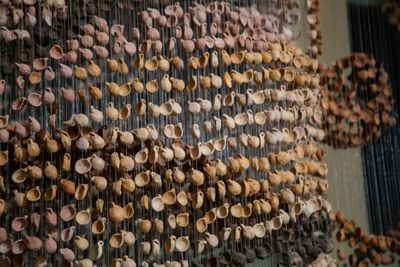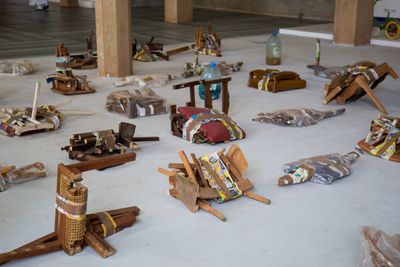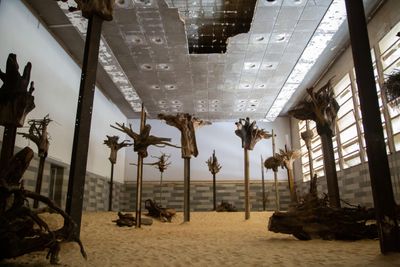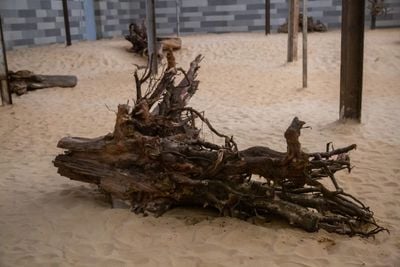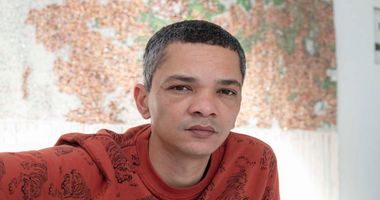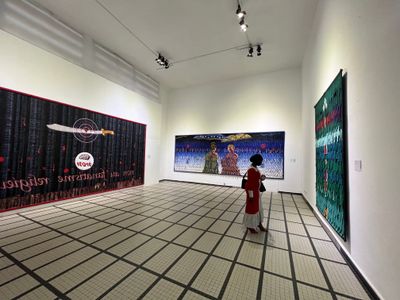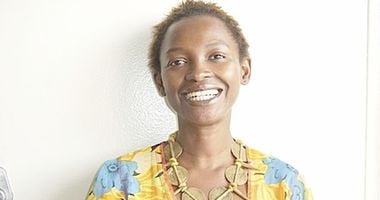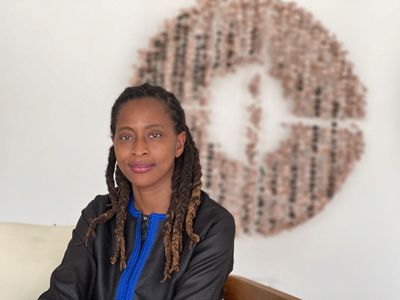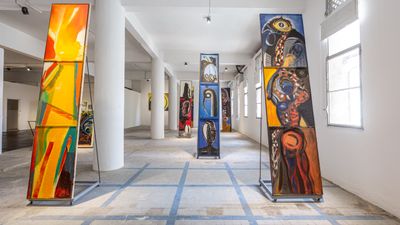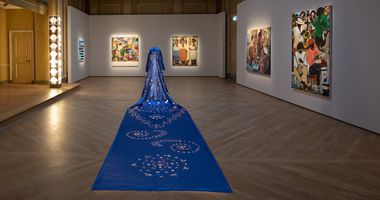At Dak'Art 2022, Art Pulsates Through the City
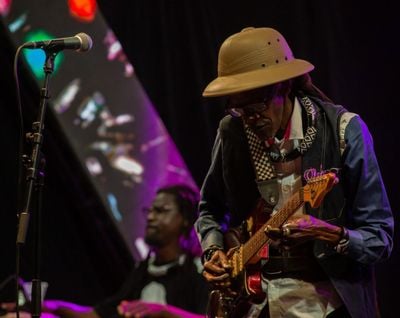
Cheikh Lô performing as part of the musical programme of Ĩ NDAFFA # – Forger – Out of the fire, Dakar Biennale 2022 (19 May–21 June 2022). Courtesy Dakar Biennale.
The Dakar Biennale is arguably the most famous art event on the African continent. Conceived in 1989, it is also Africa's longest-running biennial.
Although the 14th edition was initially slated for 2020, it was postponed to May 2022 due to the pandemic (19 May–21 June 2022). Coming off the heels of the 59th Venice Biennale, it signalled for many African artists the revival of trans-African travels and re-encounters. Even more so for Africans in the diaspora, who were cut off from the continent by lockdowns and travel restrictions.
Among the Biennale's 11 main sites, the former Palais de Justice is hosting the official international exhibition, featuring works by 59 artists, as organised by this year's artistic director, Dr El Hadji Malick Ndiaye. While conceived before the pandemic, the theme of the central exhibition did not change, with the aftermath of the murder of George Floyd adding weight to the exigency of the theme, Ĩ NDAFFA # – Forger – Out of the fire.
Coined from a Serer verb, which indicates an invitation 'to forge', the word Ĩ Ndaffa is a literal reference to the transformation of the resistant quality of matter, often metal.
Conceptually, however, Ĩ Ndaffa embodies a multilayered proposal. According to Ndiaye's statement, on the one hand the theme is a call to refuse 'form as a given', and on the other, to forge 'the still shapeless senses'.
What is in contestation here is not merely a peripheral transformation of aesthetics and modes of representation, but a call that aligns with an epistemological shift currently underway in Black and non-Western parts of the world. This is an invitation to embrace different forms of making and knowing that are embodied, experiential, and capable of healing and reparation.
Not only is our world in dire straits; it is unhealthy from crust to core. Art in our time is as much the last line of defence as it is the only means of galvanising purposeful optimism.
Accordingly, this year's Biennale takes on a rhizomatic structure, allowing the event to feed off the convivial nature of the Senegalese and the hospitable aura of the coastal city of Dakar.
Entering the former Palais de Justice, one is greeted by a monumental presence exuding from a building that once was a symbol of state power. As if to respond to this monumentality, works exhibited near the entrance attempt to mirror the building in size.
These include Alioune Diagne's painting of a street scene in Lexique des signes inconscients (2020) and Beya Gille Gacha's raw earth installation L'Autre Royaume (2022) featuring a blue figure standing within a well-like structure.
The interplay of power and monumentality is further buttressed in the monographic exhibition of work by Malian veteran artist Abdoulaye Konaté, displayed in the main chamber of the former courthouse.
To any critical audience, the intricacies of the works are swallowed by the forced effort to place them on a pedestal, thus ascribing them the status of placeholder.
Konaté's works consist of large-scale, colourful weavings of dyed cloth pieces from Mali. They thrive on a detailed replication of intricate patterns that morph into picturesque scenes, such as Lune bleue 2PM (2019), featuring a moon hovering against a background in gradating shades of navy to sky blue.
The display of Konaté's works does, however, unearth the problematics of the prosaic handling of the politics of representation in this show. Konaté's large-scale pieces are installed in such a way to fill the large but empty walls of the chamber. Everything about the display is a contrived effort to confer a majesty to the artist's work.
To any critical audience, the intricacies of the works are swallowed by the forced effort to place them on a pedestal, thus ascribing them the status of placeholder. The failure is in the absence of any attempt to acknowledge the contradictions of scale.
To further illustrate this point, I turn to Think Tea, Think Cup III (2020), an installation by Ngozi-Omeje Ezema exhibited in the courtyard of the building.
Attached to a cascade of fishing lines are miniature pottery pieces precisely suspended to coalesce into a large installation featuring a kettle pouring tea into a cup. The sculptural piece says something about how things come into being, drawing attention to the fact that—much like thoughts—all things start out at a molecular level, imbued with the potential to take on familiar, purposeful forms.
Yet what is most intriguing about Ezema's installation is how it fiddles with, and complicates, the notion of scale.
If what we do (and make) has any possibility of nurturing life, it must also abstract, if not defy, scale. Because in our time, knowledge has the tendency to be omnipresent and as such, contradicts a sense of physicality altogether.
The operative nature of any organic (living) process is premised on the interchangeable relationship between big and small. Sometimes they take on the form of a paradox; other times, they are contradictions. We find these tendencies in the making of potent thoughts as we strive to reimagine history and rewrite narratives.
With that in mind, Emmanuel Tussore's sculptural installation De Cruce (2022) stands out within the central show. An entire chamber of the building is repurposed into a dystopian landscape consisting of dead tree trunks with contorted roots and branches, mounted on heavy, rusty metal H-beams. The dilapidated ceiling and window panes of the space add to its eeriness.
This work embodies a chilling truth about a world of violence—the exact antithesis of the nurturing quality of nature. It evokes myriad emotions associated with our inherent aversion to violence. Moreover, the manner in which the metal beams (some with spiky ends) decapitate the tree trunks is invasive, to say the least.
The floor is covered in sand, perhaps in reference to the sprawling coastline of Dakar. Or could it be a sarcastic reminder that much more lies beyond the appealing sight of blue seas and ocean waves smashing against shores?
What makes the Dakar Biennale such an organic tapestry for the performance of togetherness are the hundreds of OFF exhibitions that sprout around the central show. This year, the event is spread across 17 zones and extending to the islands of Gorée and Saint-Louis.
I personally felt more drawn to works among these presentations—those transcending the realm of appearance towards possibilities of revelation, while retaining their areas of opacity within their poetics of relation.
Further exhibitions can also be found in Dakar's art spaces, many of which are founded, run, or initiated by women. These include RAW Material Company, whose founding artistic director is curator Koyo Kouoh; Gallery Cécile Fakhoury; OH Gallery by Océane Harati; Galerie Atiss Dakar by Aissa Dione; Selebe Yoon by Jennifer Houdrouge, and The Third by Monifa Pendelton (repurposed by British-Nigerian curator Amina Agoro for her exhibition featuring multimedia works by Ngozi-Omeje Ezema and Charles Okereke).
Showing at Houdrouge's 1,000-square-metre Selebe Yoon site is an expansive solo exhibition of veteran Senegalese artist and cultural activist El Hadji Sy's work, consisting of paintings of variable scales mounted on canvas and hung on walls.
What makes the Dakar Biennale such an organic tapestry for the performance of togetherness are the hundreds of OFF exhibitions that sprout around the central show.
The exhibition, titled Now / Naaw (19 May–30 July 2022), plays on the Wolof meaning of the verb 'to fly'. The depth of El Hadji Sy's artistic practice—spanning 50 years—is beyond the scope of this article. That said, one could easily see why his practice would be the jewel in the crown, not only to the Biennale's theme, but for such a space as Selebe Yoon.
El Hadji Sy's work is a culmination of the tugging spirit of defiance that has long constituted the rumbling underbelly of post-independence Africa. Paintings like La Capture de la vache (2016) and L'envol (2022) are indicative of Sy's penchant for the performative, and his tendency to subvert the formalities of form and aesthetics.
In Wolof, selebe yoon translates to 'the crossroad'—a reflection of founder Jennifer Houdrouge's background, with Lebanese-French parentage and rooted ties to Dakar. Her space, as with her outlook, is hyphenate, combining a residency and gallery. The exhibition of El Hadji Sy's work here is both a reaffirmation and an homage to pluriversality.
Taking everything into account, the 14th Dakar Biennale is ambitious in its positioning. The event succeeds in placing itself at a crucial platform upon which a not-too-distant horizon of an attainable utopia is visible.
Central to the Biennale's artistic statement is the call for an 'epistemic disobedience'. This form of disobedience veers away from misplaced priorities and frees entrapped time to forge possible futures. —[O]

